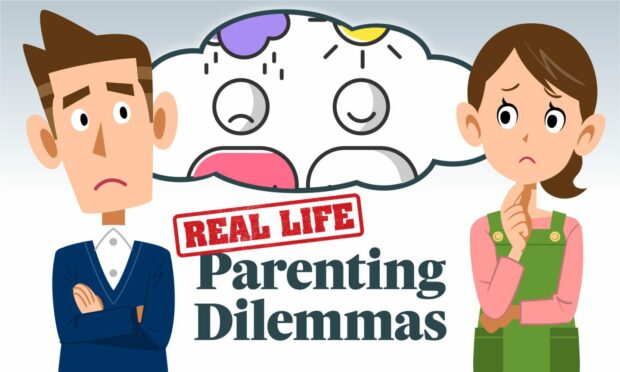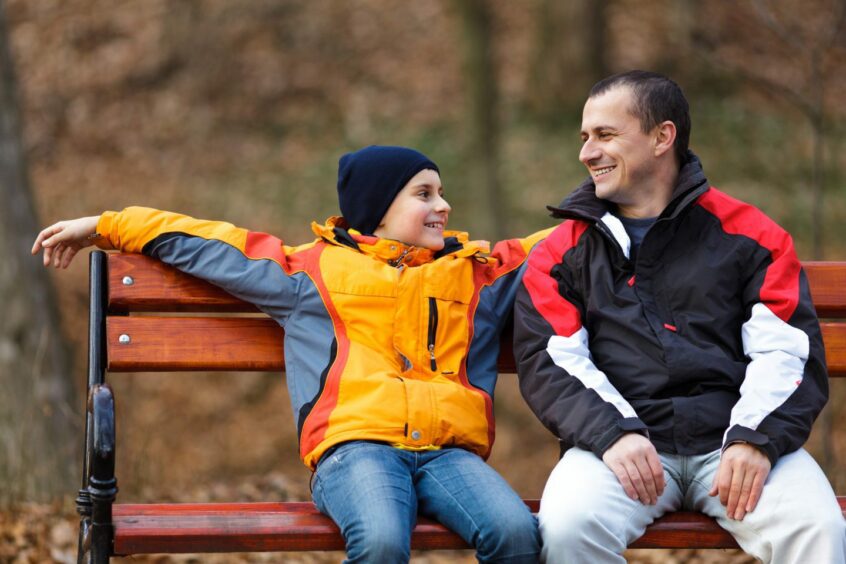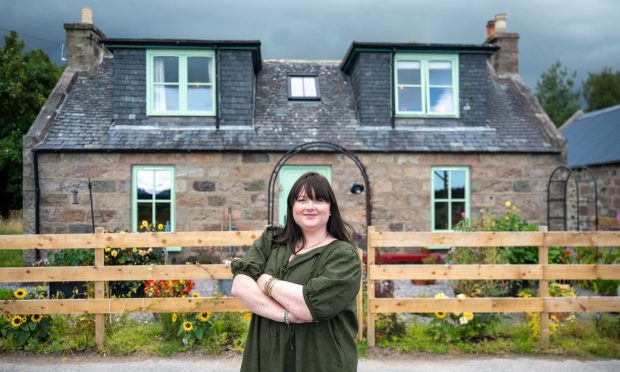Highland educational psychologist James McTaggart is here with advice on getting through winter with Seasonal Affective Disorder.
Seasonal Affective Disorder (SAD) is a recognised form of depression affecting up to two million people in the UK alone. Yet it’s still widely misunderstood as just a touch of the ‘winter blues’.
The stigma surrounding mental health conditions including SAD is a major challenge in learning to treat it. Many people will put on a brave face and try to hide their symptoms.
For parents, the struggle is particularly acute: how do you look after your family when you’re struggling to look after yourself?
And let’s face it, the north of Scotland climate doesn’t help. When the days are short and dreich, it’s tempting to hide under your duvet.
The good news is, there are many tools and strategies that can help. We spoke to Ardross-based educational psychologist James McTaggart for advice. James suffers from SAD himself and is here to share some ideas to help you get through it as a family.
Life is still there, behind the SAD
It’s important to understand that SAD isn’t just feeling a bit down on a rainy day. While the exact cause is unknown, it’s thought to be triggered by fluctuating hormone levels in the darker months from October to March.
Serotonin is the hormone responsible for our mood, appetite and sleep. Since sunlight triggers our body to produce serotonin, our levels can dip in the winter, leading to low mood and depression.
At the same time, darker days cue our bodies to produce more of the sleep hormone melatonin, leading people with SAD to feel exhausted and lethargic.
None of this is within our control, and nor are the emotions that come with it. James says we should go easy on ourselves.
“Guilt is natural but it doesn’t help,” he says. “One of the hardest aspects for a parent with any illness or personal difficulty can be a sense they are letting their children down or not caring for them properly. Or the low mood can block the usual feelings of love or connection for the children. This can then affect not just the parent’s wellbeing, but the relationship between them and their children.”
It’s a potentially vicious cycle. James suggests ‘talking back’ to any feelings of guilt. Remind yourself of times you had fun and provided love and care to your kids. You could make a list each day of the things that went well.
“And remember you do still love them,” he adds. “Behind the SAD, it’s all still there.”
Get out and about
So how can you take practical steps to help yourself and your family with SAD?
According to NHS Inform, getting out and about during the brightest time of the day can make a big difference. Try a walk on your lunch break or a trip to the park with the kids. Getting out in nature will help to rebalance your mood and deliver some much needed sunlight.
If you need some inspiration, take a look at our interactive maps of free activities and walks in the north and north east.
But don’t try to do too much. James advises setting small goals.
“It is tempting to try to make a huge effort to make all well,” he says. “Things like going on a big trip or meal out, or committing to play football with the children for the whole weekend. But sometimes we can’t manage, and then feel worse about it.”
Instead, James suggests focusing on small things you can manage, at times of the day when you tend to feel better. It could be as small as smiling and asking about the school day at supper time, or going for a kickabout for half an hour on a Sunday afternoon.
“Then be proud you managed, despite feeling low,” he says.
Embrace the dark, cosy nights too
Natural light is really important in managing SAD. Failing that, many people find tools like a light box can help too.
Yet James also suggests that we try welcoming the positive things about winter. You’ve probably heard of the trendy Danish concept of ‘hygge’ – getting warm and cosy, and enjoying the simpler pleasures. The Scots version is ‘coorie’ and there’s a lot of comfort to be derived from hunkering down with family.
“One of the things about low mood is that we don’t feel like doing any of the things that we know will help us,” says James. “In particular, for SAD, it is often recommended to get outside in daylight, to eat healthily and to try to enjoy the ‘snuggly’ aspects of cold weather, with hot drinks and cosy evenings.”
The great thing about that advice when you’re a parent, is it’s also a natural opportunity to spend time with your kids. James suggests a short walk in the crisp morning air and story time under the duvet at night.
It may sound simple, but research shows that SAD symptoms are reduced by half if your surroundings are warm and comfortable.
The current cost of living crisis may make that goal feel tougher right now, so reach out for help if you need it. Our article on saving money without making cuts may be a helpful read for starters.
How to explain Seasonal Affective Disorder to your kids
Sometimes no matter how hard we try, we can’t shelter our children from the tougher elements of life. The good news is it’s healthy to show emotions and to communicate with your family.
James offers some advice on how to explain SAD in a way that’s not too overwhelming for little ones. If you’re putting off that conversation, consider that there’s a good chance your children already have an inkling of what’s going on.
“Children are not fools, even young ones,” says James. “They may know something is not right. But they don’t know what, and this can be frightening.
“Also, children often assume things are their fault, and either then feel bad themselves or try too hard to make it right – which can look like misbehaviour.”
James says the right amount of clear information can be really helpful.
“Think about what you’d want to know if you were your child,” he says. “And let them ask questions – it’s a great way for them to deal with worries.
“If you model how to manage difficult feelings, this will actually make the children more resilient themselves. Something like, ‘When it gets cold and darker in the winter, I sometimes feel sad and tired so I can be a bit grumpy and not very good at playing. It’s not your fault – remember I always love you, and we’ll find some times to play soon.'”
SAD experts say spending time with family and friends is a great way to tackle the low mood that comes with SAD. So let your family support you, and the lighter days will arrive before you know it.














Conversation